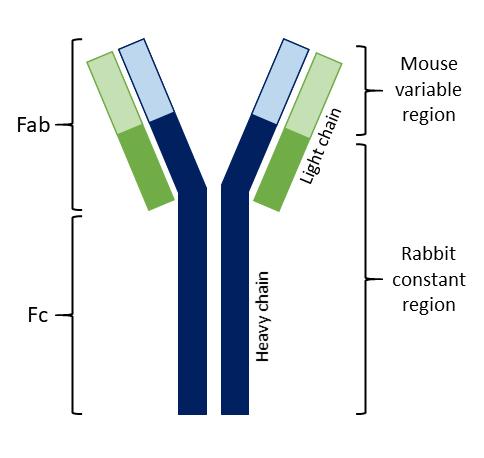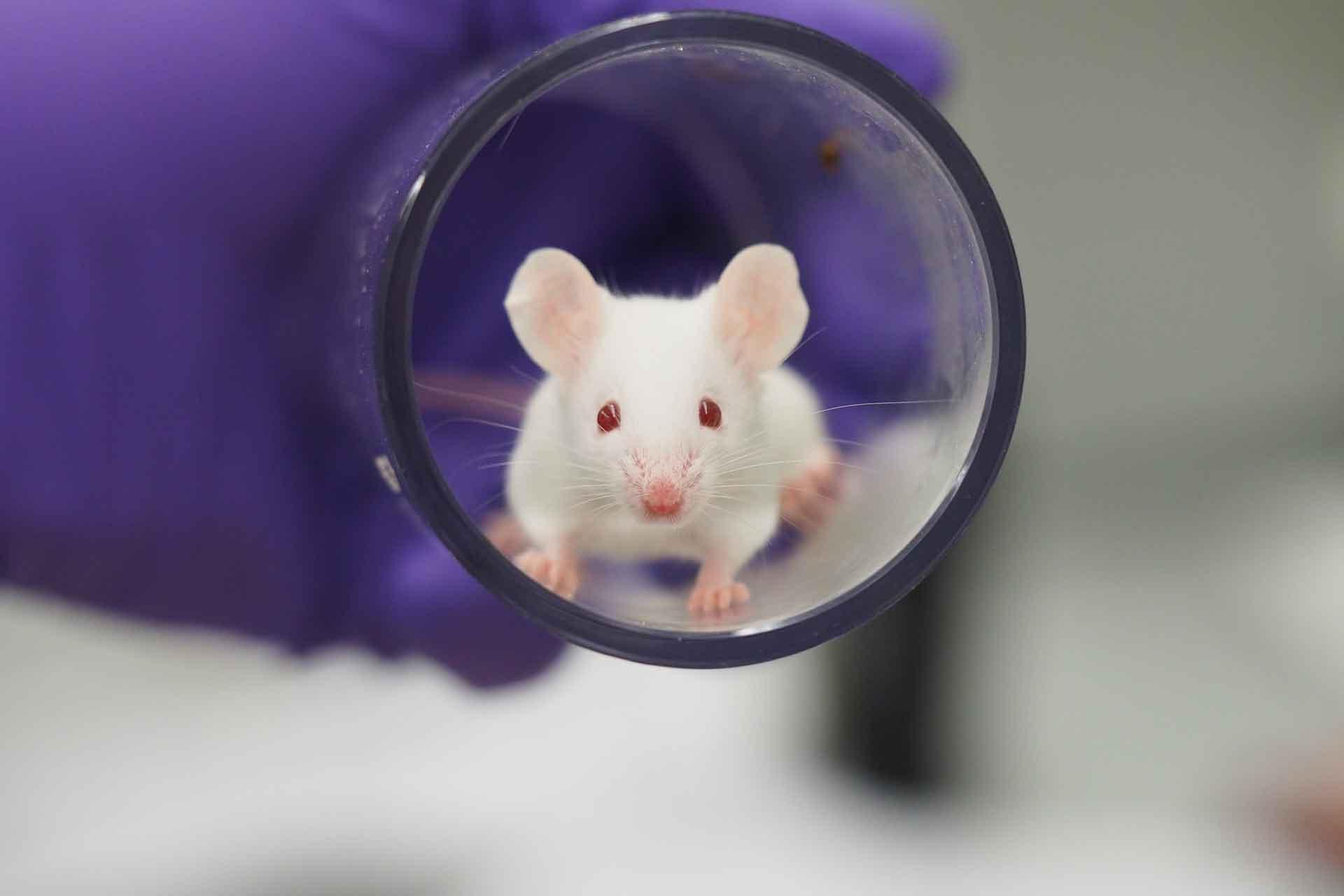A novel foot-and-mouth disease (FMD) diagnostic reagent has been developed by scientists at The Pirbright Institute. This has the potential to be used in FMD diagnostic tests, and will be significantly quicker to produce when compared to existing test reagents due to a simplified production technique.
Diagnosing cases of FMD quickly and accurately is key to tackling outbreaks. There are seven types of FMD virus (called serotypes), and vaccines must be matched specifically to each type in order to protect animals against an approaching outbreak. Tests carried out by the World Reference Laboratory for Foot-and-Mouth Disease (WRLFMD) at Pirbright allow scientists to accurately determine the serotype of samples that come in from around the world. However, some of these tests currently use antibodies obtained from rabbits to capture FMD virus present in a sample.

Diagram of the hybrid mouse-rabbit antibody where the mouse variable region is able to bind foot-and-mouth disease virusThe research, published by scientists from the WRLFMD in PLOS One, details how they have used the genetic sequence of a mouse antibody that binds FMDV to create hybrid mouse-rabbit antibodies which can be produced in cell cultures. Researchers replaced part of the rabbit antibody with a section of the mouse antibody ‘Fab’ region, which binds to the FMD virus. These lab grown hybrid antibodies are secreted into the cell medium, ready for collection and use in diagnostic tests.
“The potential benefit of this is two-fold” said Gareth Shimmon, first author of the paper. “The most obvious advantage is that we would no longer need to use rabbits to generate reliable diagnostic reagents, in line with the 3Rs [Reduction, Refinement, Replacement of animals in research].
“The second benefit is that we can artificially generate an unlimited quantity of antibody using a single genetic sequence, which means each antibody that we produce will be identical. With such high reliability, the need to validate the reagent is significantly reduced. In addition, because these antibodies are efficiently secreted, it is very easy for them to be collected, removing the need for additional labour intensive purification.”
This research is a prime example of how scientists at the WRLFMD continuously strive to improve the reliability and efficiency of diagnostic procedures. Ensuring the quick turnaround of samples ensures outbreaks can be identified rapidly, helping affected areas to bring the disease under control.
